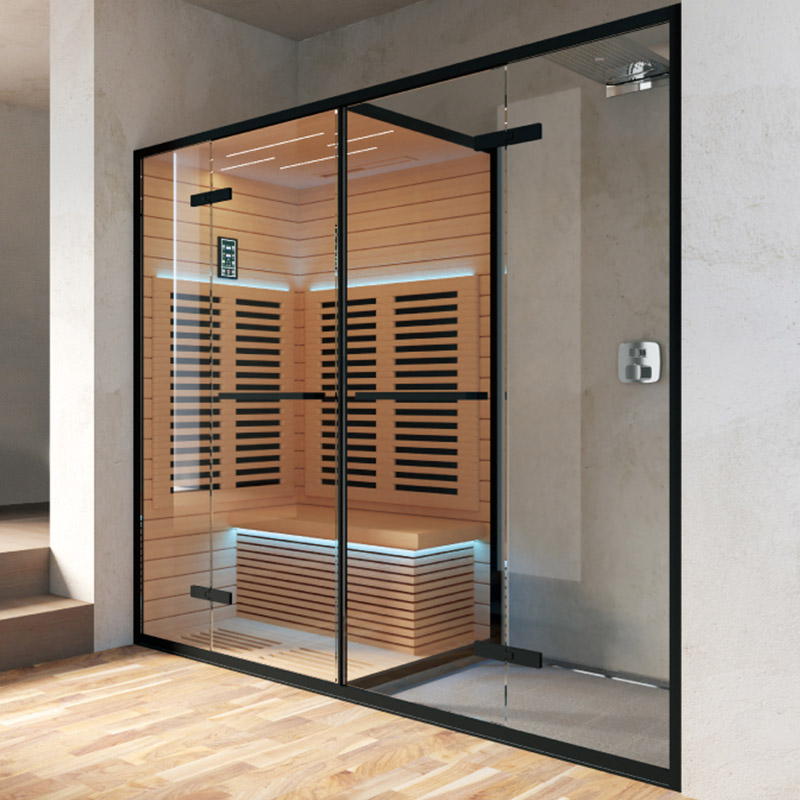Key features and considerations related to sauna rooms
2023-10-18
A sauna room, often referred to simply as a sauna, is a small, enclosed space designed for the purpose of providing a dry or wet heat bath. Saunas are used for relaxation, detoxification, and various health benefits. They have a long history and are popular in many cultures worldwide. Sauna rooms come in different types, including traditional dry saunas, steam saunas, and infrared saunas, each with its unique characteristics and benefits.
Here are some key features and considerations related to sauna rooms:
1. Heat Source:
- Traditional Dry Sauna: This type of sauna uses electric or wood-burning heaters to heat rocks or sauna stones. Water can be poured onto the hot stones to create steam and increase humidity, although it's primarily a dry heat environment.
- Steam Sauna: Also known as a steam room or Turkish bath, steam saunas produce moist heat by generating steam through a steam generator. They typically have higher humidity levels than dry saunas.
- Infrared Sauna: Infrared saunas use special heaters that emit infrared radiation to directly heat the body, rather than the air. They operate at lower temperatures than traditional saunas and are considered more comfortable by some users.
2. Temperature and Humidity:
- Dry Sauna: Dry saunas typically have higher temperatures and lower humidity levels.
- Steam Sauna: Steam saunas have lower temperatures but much higher humidity levels.
- Infrared Sauna: Infrared saunas operate at lower temperatures and moderate humidity levels.
3. Seating: Sauna rooms usually include benches or seating areas where users can relax and enjoy the heat. The seating arrangement can vary depending on the sauna type and design.
4. Materials: Sauna rooms are often constructed using heat-resistant materials such as cedar, hemlock, pine, or other woods. These materials can withstand the high temperatures and humidity found in saunas.
5. Ventilation: Proper ventilation is essential in sauna rooms to ensure fresh air circulation and remove excess heat and humidity. Ventilation systems are designed to maintain a comfortable and safe environment.
6. Lighting: Sauna rooms typically have subdued lighting to create a relaxing ambiance. Some saunas may use LED or fiber optic lighting for added visual appeal.
7. Health Benefits: Saunas are believed to offer various health benefits, including relaxation, stress reduction, improved circulation, muscle relaxation, and detoxification through sweating.
8. Duration: Sauna sessions vary in length depending on individual preferences and tolerance to heat. Sessions typically last between 15 and 30 minutes, with breaks for cooling down and hydrating between sessions.
9. Safety: Sauna users should follow safety guidelines, such as staying hydrated, limiting session durations, and avoiding alcohol and heavy meals before using a sauna.
10. Maintenance: Sauna rooms require regular maintenance, including cleaning, checking heating elements, and ensuring proper ventilation to ensure safety and optimal performance.
Sauna rooms provide a unique and enjoyable experience, whether for relaxation, socializing, or health benefits. The choice of sauna type, temperature, and humidity level can be tailored to individual preferences. Sauna use should be approached with care, especially for individuals with underlying health conditions, and it's advisable to consult a healthcare professional before using a sauna regularly.



